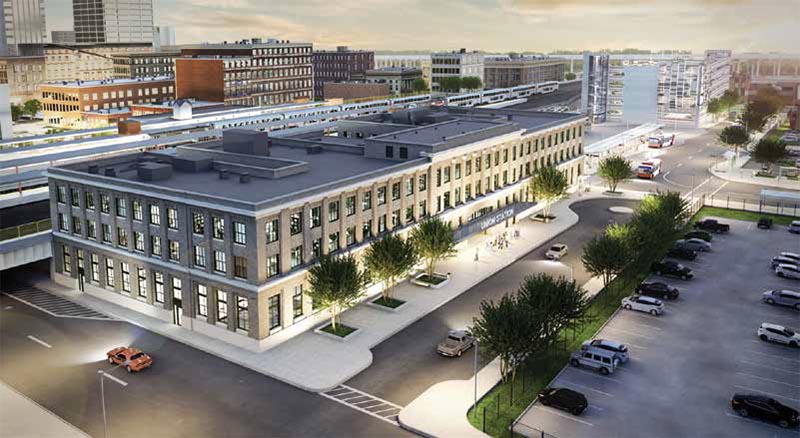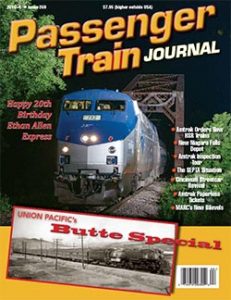 As region’s rail service expands, $88.5 million project restores landmark station shuttered for 43 years
As region’s rail service expands, $88.5 million project restores landmark station shuttered for 43 years
By Ellis B. Simon/Photos as noted
Springfield, Mass., the city that was the birthplace of basketball and Dr. Seuss, was also the principal passenger rail hub for western Massachusetts. But the decline of rail travel, generally, and the bankruptcy of Penn Central, specifically, led to the closing of its massive Union Station in 1973.
After 43 years of being shuttered, the majestic building is set to reopen in late 2016 thanks to an $88.5-million restoration and redevelopment project. And, several projects recently completed, under construction or on the drawing board portend a much busier future for the 90-year old depot. These include a rerouted and faster Vermonter, an upgrading and rebranding of Amtrak’s New Haven–Springfield line, a commuter-rail test between Springfield and Greenfield, and proposals to offer high-speed service to Boston via the Inland Route.
When it opened December 19, 1926, Springfield Union Station served the Boston & Albany (New York Central) Railroad main line, the New Haven Railroad’s Springfield line, and the Boston & Maine Railroad’s Connecticut River line. In its heyday, approximately 130 trains used the station every 24 hours.
Passenger traffic remained brisk in the years immediately after World War II. A 1946 NYC timetable listed 15 eastbound and 14 westbound passenger schedules each weekday, including the New England States, Paul Revere, New England Wolverine, the Genesee and South Shore Express between Boston and Chicago; the Advance Knickerbocker and Southwestern Limited between Boston and St. Louis, and the Niagara between Boston and Buffalo.
A 1951 New Haven schedule showed 17 weekday round trips between Springfield and New Haven, most running through to/from New York. The northbound Montrealer and southbound Washingtonian led the fleet, ferrying sleeping cars and coaches between their namesake cities. Other long-distance trains included the Connecticut Yankee, which ran between New York and White River Junction, Vt., and the Day White Mountains, a New York–Berlin, N.H., run.
North of Springfield, those trains used B&M’s Connecticut River line, which in 1951 saw ten weekday round trips between Springfield and Greenfield plus one between Springfield and Northampton. Six runs continued to White River Junction or points north, including the Overnighter, which carried a New York-White River Junction Pullman.
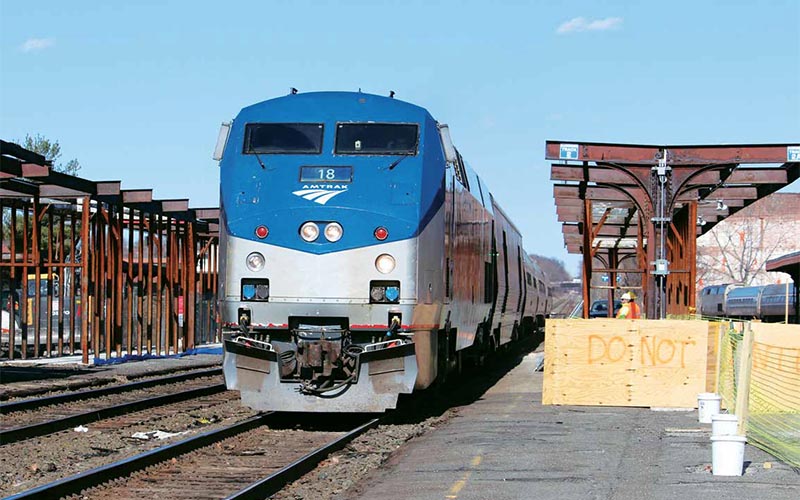
The Boston section of Amtrak’s Lake Shore Limited arrives at Springfield Union Station on March 22, 2016, with reconstruction of the 90-year-old facility under way. A two-car Hartford Line trainset is parked at far right. Ellis B. Simon photo
The Inland Route, operated jointly by B&A and New Haven between New York and Boston via Springfield, still offered frequent service in 1951. New Haven schedules listed five weekday round trips, two of them with through coaches.
Service on all three lines roads eroded over the next 20 years, as passengers deserted trains for the skies and improved highways. By 1971, the B&A main line saw only a single-car connection at Albany-Rensselaer to a nameless New York-Chicago train. The Montrealer and Washingtonian stopped running in 1966, and the last B&M service between Springfield and Greenfield ended in 1968. Only the former New Haven Springfield line still had multiple frequencies.
When Amtrak commenced operations on May 1, 1971, six weekday round trips ran between Springfield and New Haven, with three additional runs between Hartford and New Haven. Amtrak’s early years saw several improvements, including restoration of through New York–Boston service via the Inland Route in July 1971, the return of the Montrealer in September 1972, and introduction of the Lake Shore Limited between Boston, New York and Chicago in October 1975.
The new services could not keep Springfield Union Station open, however. Penn Central, which went bankrupt in 1970, closed the depot in 1973 and sealed the entrance from the railroad’s south side. Amtrak moved into a makeshift facility in the concourse under the tracks.
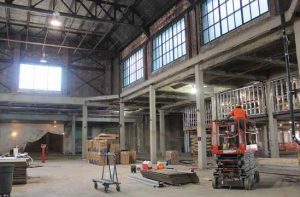
The 90-year-old building’s interior is being revamped for a new life as a train station and office complex. Ellis B. Simon photo
Soon after Union Station closed, New York financier David Pundman acquired the structure but did not maintain it. Because of its deteriorating condition, Springfield Mayor Richard Neal moved to acquire the property through eminent domain in 1988, with the goal of redeveloping it into an intermodal transportation center. A redevelopment plan released in 2001 proved too ambitious, and the project stalled.
In 2008, the city and the Pioneer Valley Transit Authority resurrected the project on a more modest scale. Its $88.5-million cost is being paid with $43.2 million of federal funds, $39.7 million of state money and $5.6 million from local sources.
The building’s exterior is being restored and the entrance will receive new signage. The station’s north-side frontage along Frank B. Murray Street is being rebuilt as well. Inside, the waiting room, train concourse, and other public areas are being refurbished, with new ticketing areas and other public facilities. The building will have 10,000 square feet of retail space on the ground floor and 57,000 square feet of commercial space for office development on the four wings of the second and third floors.
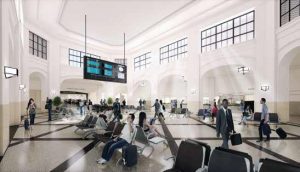
Artist renderings of the finished station revamping show a bright, airy feeling in the waiting room of a station building that has largely been moribund for decades. Springfield Redevelopment Authority
An adjoining baggage building was demolished to make room for a 26-bay open-air bus terminal and a six-story, 377-space parking garage. Both Peter Pan Bus Lines, a regional intercity carrier, and the Pioneer Valley Transit Authority, the local transit agency, will use the facility. Revenue from the parking garage is expected to subsidize station operations.
In addition, the passenger tunnel under the tracks leading to Lyman Street on the south side is being reopened, allowing travelers direct access to downtown Springfield. New high-level platforms are being built at track level, albeit one at a time so that Amtrak’s current operations will not be disrupted.
City officials are banking on the reopened station to spur revitalization of Springfield’s downtown district, which stretches south from the station to a $950-million MGM casino scheduled to open in 2018. Already, an apartment building near the station was sold to a developer who is converting it to luxury rentals. In addition, “an innovation district is taking shape in the center of town with entrepreneurial businesses occupying space in some of the commercial buildings,” said Kevin Kennedy, Springfield’s chief development officer.
Both officials and residents see the station as spurring a passenger-rail renaissance that is already underway. “We’ve gotten a lot of feedback from people sharing their memories and experiences,” said Christopher Moskal, executive director of the Springfield Redevelopment Authority, the project’s lead agency. “The project has really caught on with people in the region.”


